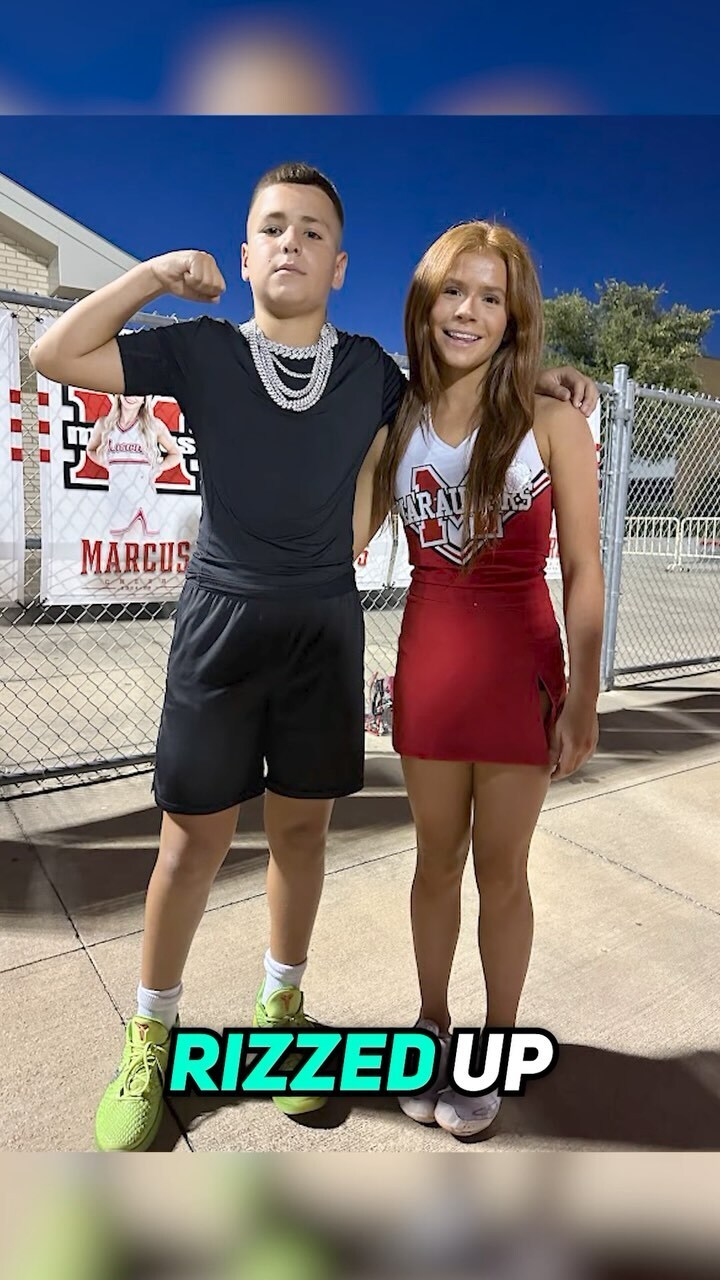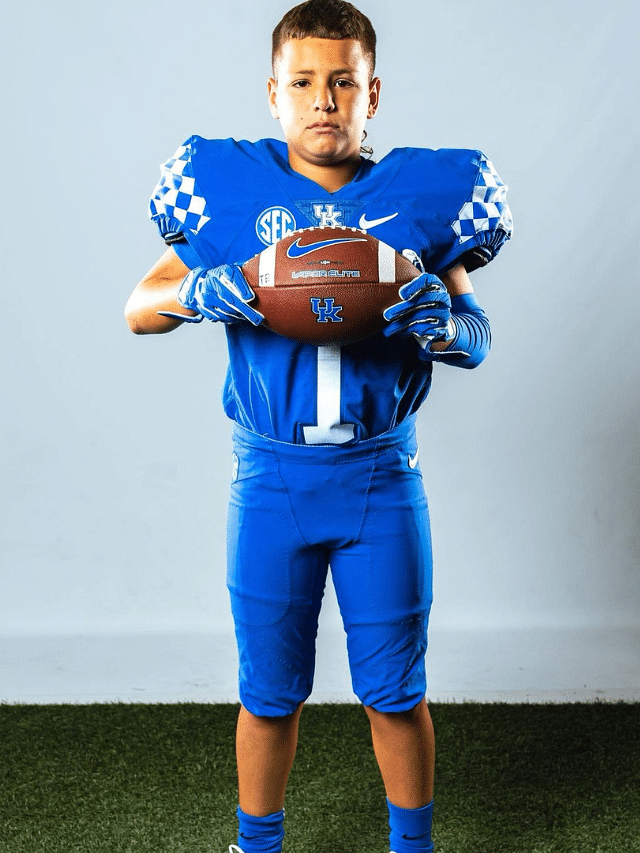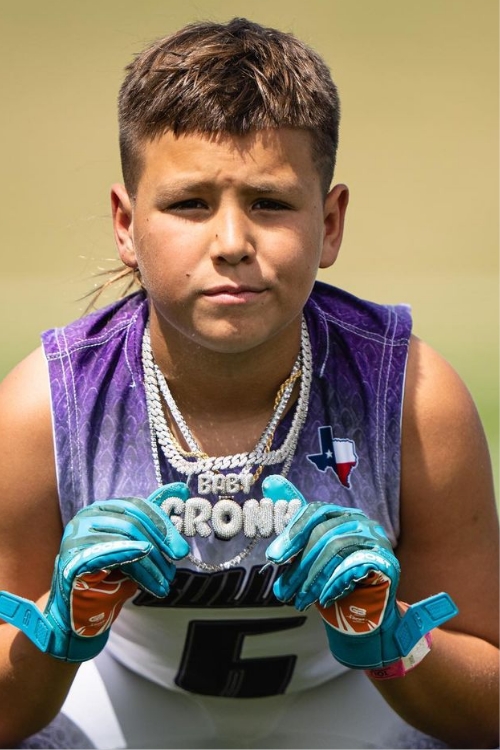Is the world of youth sports becoming a bizarre, hyper-mediated spectacle, fueled by ambition and social media? The recent saga of Baby Gronk suggests that the answer is a resounding yes, as the line between childhood innocence and calculated branding continues to blur.
The story, unfolding primarily on platforms like TikTok and Instagram, centers around Madden San Miguel, a ten-year-old football player who has adopted the moniker Baby Gronk. The young athlete, backed by his father, Jake San Miguel, has become a subject of fascination, and increasingly, concern, for many. Much of the online discourse surrounding Baby Gronk focuses on the role of his father, who seemingly manages his son's social media presence and overall public image, pushing the boundaries of parental involvement in the age of influencer marketing. The elder San Miguel’s actions have sparked an internet firestorm, leading many to question the intentions and motivations behind the entire endeavor.
Here's a deeper look into the key figures involved:
| Aspect | Details |
|---|---|
| Name | Madden San Miguel (Known as Baby Gronk) |
| Age | 10 years old (as of recent reports) |
| Sport | American Football, Baseball, Golf |
| Social Media Presence | Instagram: Over 315,000 followers, Active on TikTok |
| Father | Jake San Miguel (Social Media Manager) |
| Potential Motivations (Speculation) | Fame, Financial Gain, Building Brand |
| Controversies | Exploitation of a Minor, Questionable Tactics |
| Notable Associations | Rumored connections with Olivia Dunne, LSU |
| Authentic Web Link | Famous Birthdays - Madden San Miguel |
The digital footprint of Baby Gronk is extensive. He is a well-known face, often documented in videos displaying his athletic skills and, more frequently, engaging in promotional content. His father appears to be the driving force behind this strategy, orchestrating various interactions and building a persona that has garnered significant attention. The younger San Miguel’s social media accounts are filled with endorsements, collaborations, and content that has quickly made him a recognizable figure.
One of the most talked-about elements of the Baby Gronk narrative involves Olivia Dunne, a prominent gymnast at Louisiana State University (LSU). De Tolla's videos suggest that Dunne has been, in effect, “deployed” to influence Madden San Miguel to potentially attend LSU once he reaches collegiate age. This is an intricate layer of the story that has heightened the scrutiny the young athlete and his family are receiving. Many consider this type of arrangement inappropriate, especially considering the age gap and potential power dynamics at play.
The constant stream of activity, from announcing his retirement only to “return” shortly after, further adds to the perception of strategic manipulation. The relentless pursuit of attention, with its focus on branding and self-promotion, has left many observers feeling uneasy. This rapid cycle of events has left many observers with the impression that they're witnessing a carefully constructed, yet increasingly problematic, marketing strategy, rather than simply observing the natural development of a young athlete.
The situation raises critical questions regarding the roles of parents in the age of social media and influencer culture. Is it permissible for a parent to manage and monetize their child's image, especially at such a young age? What are the long-term implications of this type of exposure for a child’s emotional and psychological development? Furthermore, there are legal and ethical boundaries to consider regarding how children are presented and represented in commercial settings.
The age of the young football player is a crucial aspect of the conversation. At ten years old, Madden San Miguel is at a formative stage in his life. His experiences and interactions should be carefully considered, and his welfare should be the paramount concern. The current media environment appears to be taking a path that is potentially harmful to children.
The controversy surrounding Baby Gronk underscores a broader trend: the increasing commercialization of youth sports and the blurring of lines between athletic achievement and social media fame. The intense pressure on young athletes, the pursuit of sponsorship deals, and the constant need for exposure are now the norm. This has created a unique and challenging landscape for families and young people. The case of Baby Gronk serves as a cautionary tale, reminding us to reflect on the values and priorities we want to instill in the next generation.
The rapid cycle of events, from apparent retirement announcements to strategic collaborations, has only amplified the concerns. The father's actions have led to widespread criticism, sparking discussions about the appropriateness of exploiting a minor for financial gain. The repeated moves, the carefully constructed persona, and the strategic partnerships have created an unsettling narrative. It is a story that is quickly transforming into a symbol of the complex interplay between social media, ambition, and the protection of childhood.
The controversy surrounding Baby Gronk extends beyond individual personalities. It reflects a broader cultural issue: the commercialization of youth sports and the pursuit of fame and fortune at any cost. The focus on endorsements, social media engagement, and public image detracts from the fundamental values of sportsmanship, fair play, and the joy of the game. It raises concerns about the long-term consequences of such actions on the young athlete's emotional well-being and their future development. The conversation surrounding Baby Gronk forces us to confront some difficult questions about the values we prioritize.
The term rizz has become linked with Olivia Dunne in certain online discussions. Some content creators have playfully, or perhaps strategically, suggested that Dunne is helping to secure Baby Gronk's future at LSU. While the exact nature of their interactions may be unclear, the association highlights the complexities and potential exploitation within the social media landscape. The pairing, real or speculated, emphasizes the potential for influencers to collaborate and create a buzz around a specific story or cause. The resulting media coverage increases the focus on the younger athlete and, by extension, his father.
The situation, though unique, is not entirely unprecedented. It echoes the experiences of child actors, child models, and other young performers who have become famous. However, the pervasive nature of social media and the potential for constant exposure presents fresh challenges. It is also important to consider that the digital environment does not afford the same level of privacy or protection, so it is crucial to approach such situations with care and consideration for the young people involved.
The rapid expansion of the Baby Gronk narrative showcases the power of social media in shaping public opinion. It also calls for more ethical and legal frameworks to safeguard the welfare of children, particularly those thrust into the spotlight. As the story continues to unfold, it offers a valuable reminder of the need to approach social media and influencer culture with a critical eye.



